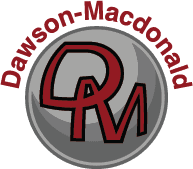Wet Blasting vs. Dry Blasting
The industrial processes of wet blasting and dry blasting are effective for cleaning or producing finishing effects on many different materials. These repeatable methods provide various benefits, including removing contaminants or excess material from a workpiece surface.
While wet blasting can generate less dust and require less abrasive tactics, it can consume considerably more water. Dry blasting can prove to be more cost-effective and versatile. Understanding the advantages and disadvantages of each blasting method is critical to selecting the right equipment for your application.
What is Wet Blasting?
Wet blasting involves propelling a mixture of abrasive media and water onto a workpiece. The main advantage of slurry blasting is that water washes away dust and abrasive residues upon impact to produce a smoother finish. The method can also prevent residue from adhering to the surface of the workpiece.
The abrasive/water mixture constantly moves when the blaster runs to create a quick blasting action. Excess water is ejected from the slurry to ensure the water and abrasive material ratio remains consistent.
The following are common methods used to mix the water and abrasive slurry:
- Water Injection Nozzles: The abrasive gets dampened before leaving the blast nozzle.
- Halo Nozzles: A mist moistens the material as the abrasive leaves the blast nozzles.
- Wet Blast Rooms: The water and used abrasives get pumped, reclaimed, and recycled.
- Modified Blast Pots: The abrasive and water remain stored under either air or water pressure.
Benefits of Wet Blasting
Wet blasting provides a vast array of benefits, some of which include:
- Low dust blasting
- Softer finishes on most surfaces
- Utilizes a finer abrasive media
- Eliminates static changes
- Removing grease
Applications of Wet Blasting
Wet blasting can prove beneficial in a wide variety of applications, including the following:
- Cleaning of molds and dies
- Removal of rust, paint, carbon, scale, and similar deposits
- Surface preparation before re-painting, re-coating, and bonding
- Satin finishing of metals such as stainless steel
- Cleaning of electrical connectors and PCBs
- Removal of small burrs from components
- Blasting in areas that demand a dust-free environment
What is Dry Blasting
Unlike wet blasting, dry blasting utilizes compressed air to propel abrasive media onto the workpiece at a high velocity. Even though dry blasting creates a lot of dust, this method provides optimal output for many applications.
Benefits of Dry Blasting
Dry Blasting provides many benefits, including but not limited to the following:
- A broad range of blast materials
- Produces a more aggressive blasting action
- Cost-efficiency
- Versatility
Applications of Dry Blasting
Dry Blasting can prove beneficial in a wide range of applications, some of which include:
- The removal of rust, carbon, scale, and paint
- Surface preparations
- Peening and deburring
- Clean, retexturing, and de-flashing plastic molds
- Decorating, engraving, and etching glass
Contact Dawson-Macdonald For Your Surface Preparation Needs
Wet blasting and dry blasting each provide distinct advantages, offering optimal results in a broad range of applications.
Since 1928, Dawson-Macdonald has served the surface preparation industry with quality solutions. As experts in blast equipment, we offer a full line of vacuum systems, wheel blast, shot blast, and wet blast equipment to satisfy the needs of our customers’ most demanding applications. Our team of experts provide guidance every step of the way to ensure your project gets completed within budget and on time while ensuring safety standards meet all regulatory requirements.
Contact us today or request a quote to learn more about the differences between wet blasting and dry blasting to determine which method is best for your specific application.




Comments are closed